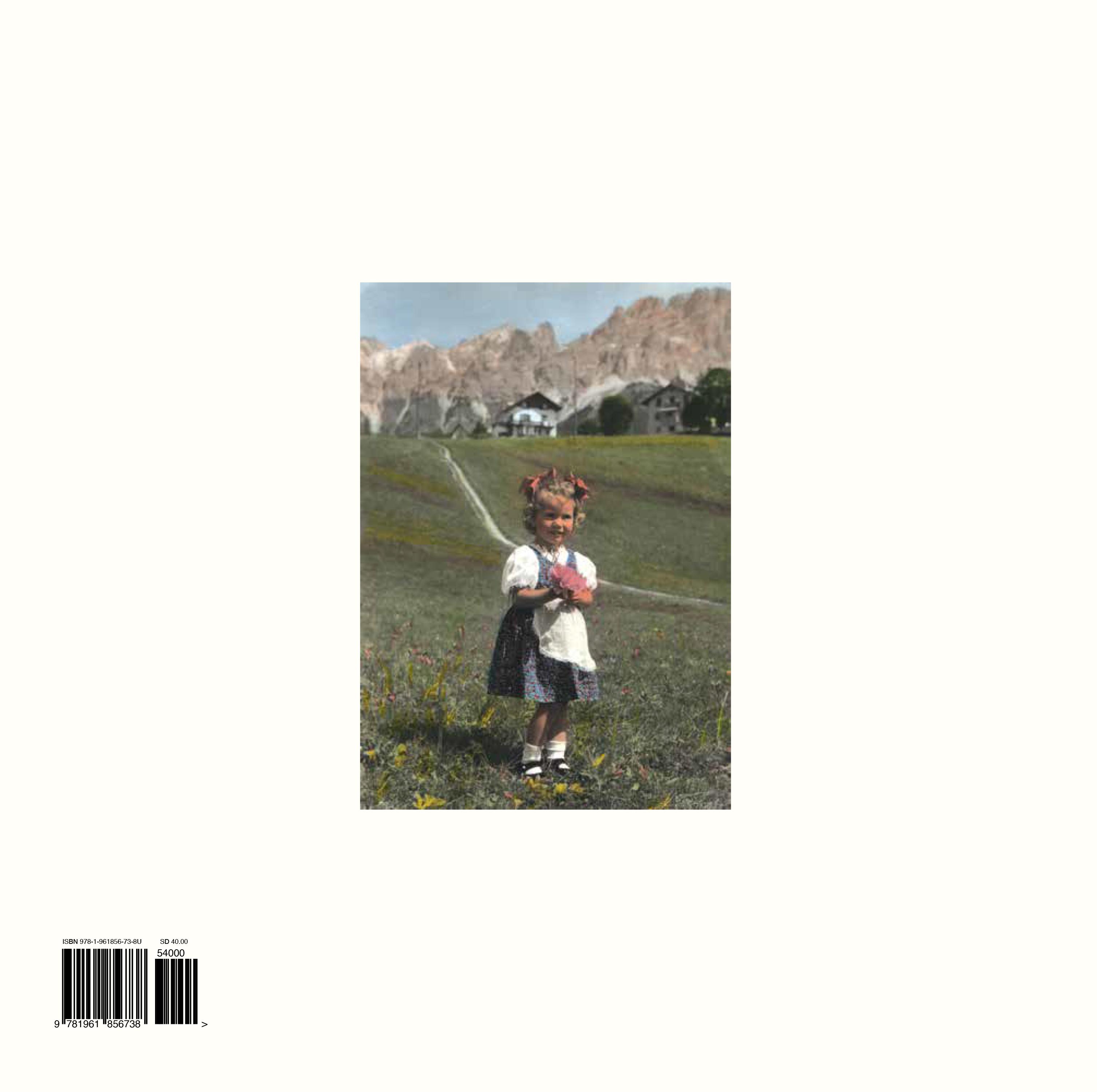

IL FAUT QUE TU TE TRANSFORME EN ARGENT
A CONVERSATION WITH ANNINA NOSEI

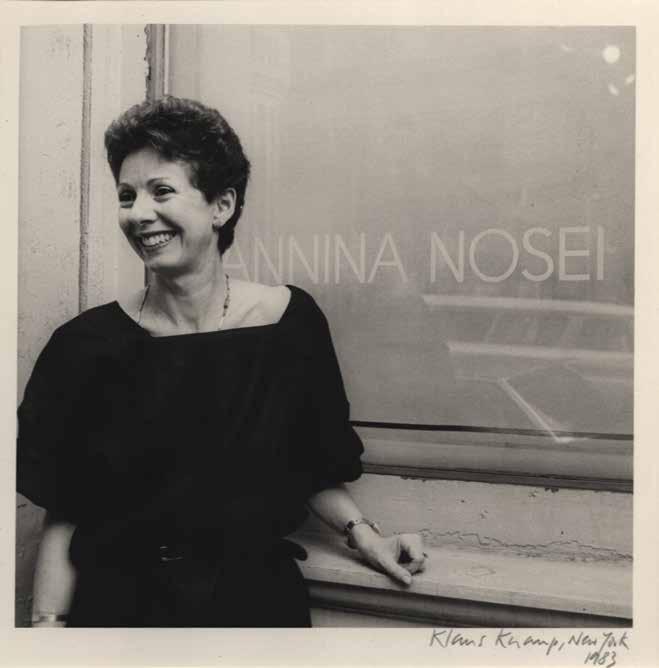
ROBERTO LAMBARELLI : Annina, you belong to a generation that found itself protagonist of the richest and most exciting phase of the last century. A generation which, starting from the very early 1960s, initiated a process of transformation in the way of conceiving of and dealing with art, producing radical changes that we cannot avoid confronting even to this day. If you don’t mind, I’d like to begin with the anecdote you told me some time ago about how in Rome, in the early 1960s, you came into contact with the Living Theatre, successively following it to Paris, if I remember correctly...
ANNINA NOSEI : In reality, things did not go quite like that. At that time I had two friends who were part of the ACT group, which was an experimental theatre group that was also in contact with actors from the Living Theatre. Their names were Carmen Scarpitta, an already well-known and well-established actress, and Rospo Pallenberg. I joined the group and I went with them to Paris in the spring of ’63, where we had been invited to participate in a Happening directed by Ken Dewey, entitled The Gift . Dewey had chosen some actors from the Living Theatre and some from ACT for this show featuring Chet Baker, for whom I acted as personal translator as well as interpreter on the set. The group was made up of many professional actors and other people who, like me, were just starting out in their careers. I was paired with a Mormon girl. We both participated in minor roles, one of which took place during a change of scene. Since Ken Dewey didn’t want interruptions – the action onstage had to go on uninterrupted – he asked the two of us, the youngest of the group, to come up with something. I didn’t like the idea of an improvisation done through miming, which was typical of those years, so I thought up an idea and at the scheduled moment I got off the stage and went toward the audience, stopping in front of a couple to whom I introduced myself in a loud voice, saying: my name; my father’s name; what he did for a living, a professor

31 JANUARY 1964
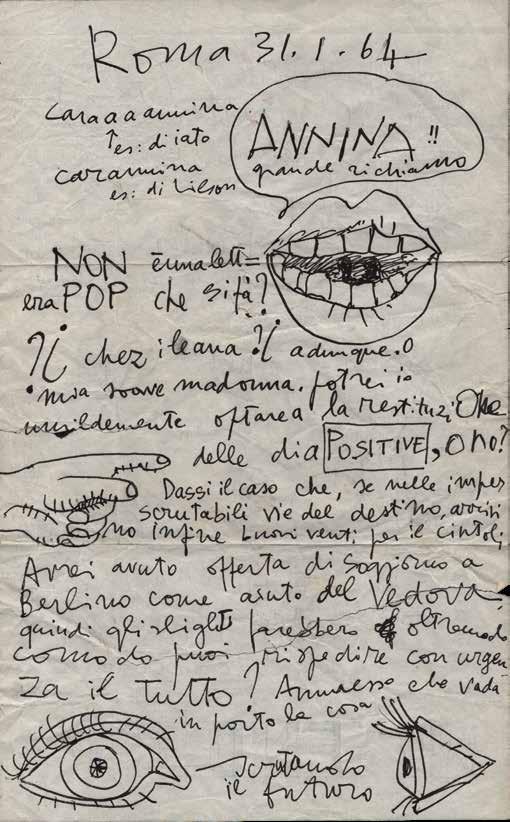
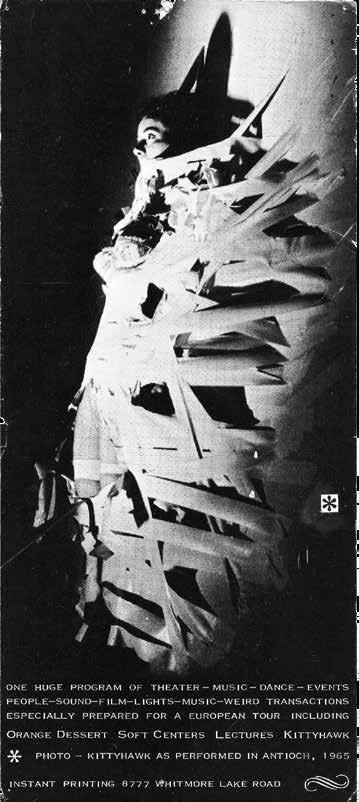
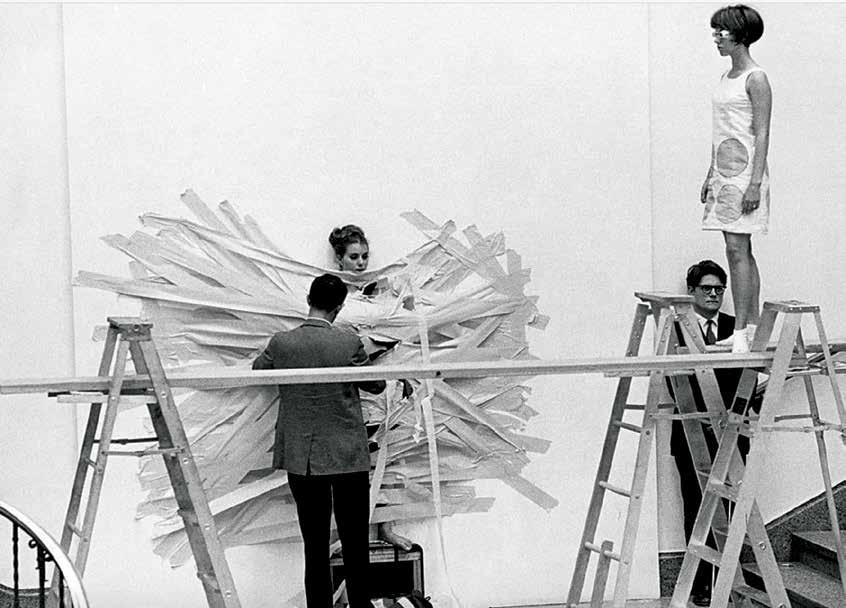
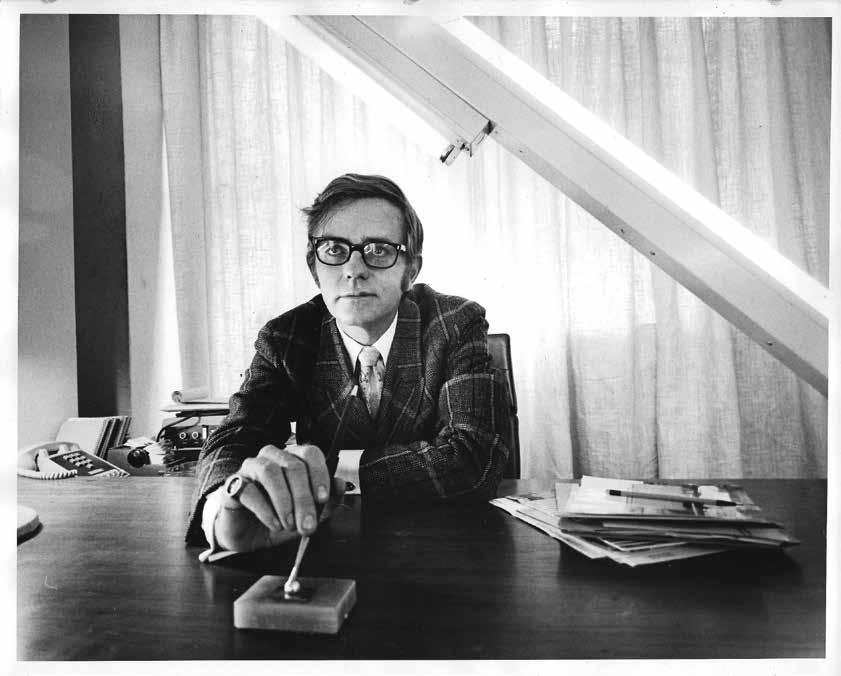
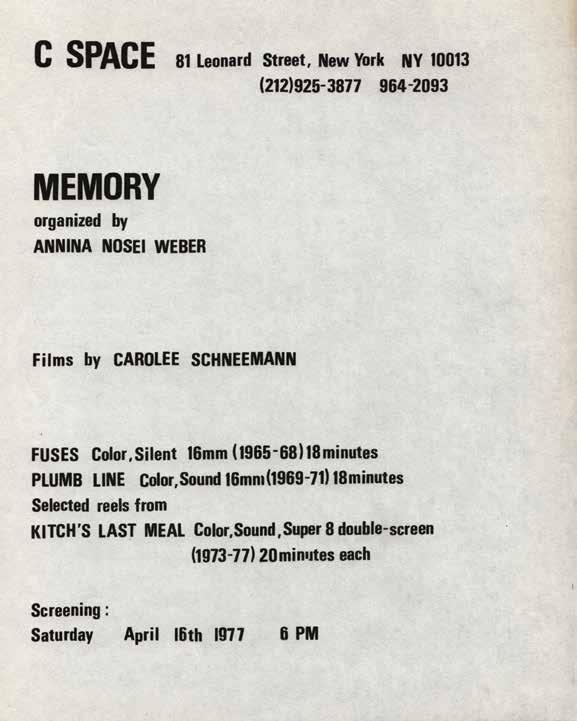
INVITATION CARD TO A SCREENING OF FILMS BY CAROLEE SCHNEEMANN, ORGANIZED AT C SPACE ON THE OCCASION OF THE EXHIBITION MEMORY, NEW YORK, 16 APRIL 1977


A COSMO POLITAN STORY

The name Annina Nosei is inextricably linked to the New York art scene of the 1980s, but her relationship with the art world dates back much further, to the period of her university studies, undertaken in her hometown of Rome as the 1950s yielded to the 1960s, a significant transition that marked a crucial moment in the history of Italian art. The Rome of the fifties was dominated by a proto-industrial culture that continued to follow rhythms dictated by the overlapping seasons. At the same time, however, there remained a sense of the ineluctability of the Futurist mandate, which had been smoldering in the ashes for around half a century, heralding a society profoundly renewed not only in its systems of production but also in its social structures and morals. The early 1960s were then witness to the proliferation of a great desire for change. The most receptive circles soon aspired to forge an international and interdisciplinary koinè that could unite the myriad forms of creativity in a unitary and thoroughly modern cultural ferment, modern both in its art and its way of life. Having successfully traversed the delicate phase of post-war reconstruction, that generation beheld the world with different ambitions, with a will to construct a secular and avant-garde culture that would derive encouragement and energy from the country’s progressive industrialization.1 The city boasted no shortage of artists of an international profile; suffice to mention only one name, Giorgio de Chirico, to convey the reach of the talents present and active in the Rome of that period, although art’s leading light continued to be Picasso. Italian artists still looked to Paris and to an art understood as an expression of freedom and outspoken anti-fascism. And yet, this widespread “Picassianism”, on one hand, and emergent scholarly study of Futurism, on the other, were both perceived by the younger generation as outdated tangents, in contrast to abstract currents – the most innovative art of the time – that answered a need for broader horizons and laid the foundations for true modernization. For all the progressive rediscovery of Futurism’s important role within the continuum of European avant-gardes, young artists’ interest was in fact turned toward America, even before the definitive transfer of artistic leadership from Paris to New York. This attitude was favored, moreover, by the overseas attention then being devoted to the Bel Paese . 2
A COSMO POLITAN STORY
1. A valuable indication of the spirit fueling the 1950s can be found in the publications of the magazine Civiltà delle Macchine established in 1953 and edited by Leonardo Sinisgalli until 1958. Financed by Finmeccanica, a subsidiary of the IRI (Institute for Industrial Reconstruction), it aimed to bring art and humanistic culture into dialogue with technology, an approach that, albeit superficially, echoed certain impulses of the Futurist cultural project. The theme of the relationship between art and industry, or art and technology, was extensively reprised in the 1960s, as further demonstrated by the activities later associated with the American group E.A.T. (Experiments in Art and Technology), a collective founded in New York in 1967 by engineers Billy Klüver and Fred Waldhauer and artists Robert Rauschenberg and Robert Whitman. 2. From the postwar era on, Europe became the key travel destination for many American artists. Popular venues included Paris, Peggy Guggenheim’s Venice, and Rome. It was there that Leo Castelli would meet the young Americans Salvatore Scarpitta and Cy Twombly, whom he would duly recruit to his gallery, a fact that underscores the relationship between the two countries. Also significant in this sense are episodes surrounding Robert Rauschenberg, who, during his long stay with Twombly in Rome, met Alberto Burri while the latter was intent on making his first Sacks. This fact allows Burri a legitimate claim to having preceded Rauschenberg in the use of the extra-pictorial materials that would lead to the Combine paintings , a fact never acknowledged by Rauschenberg. These were intense but not always easy relationships, then, such as that between Leo Castelli and Plinio De Martiis, owner of the Roman gallery La Tartaruga, for years one of busiest and liveliest European venues for US artists, along with Beatrice Monti’s gallery in Milan.
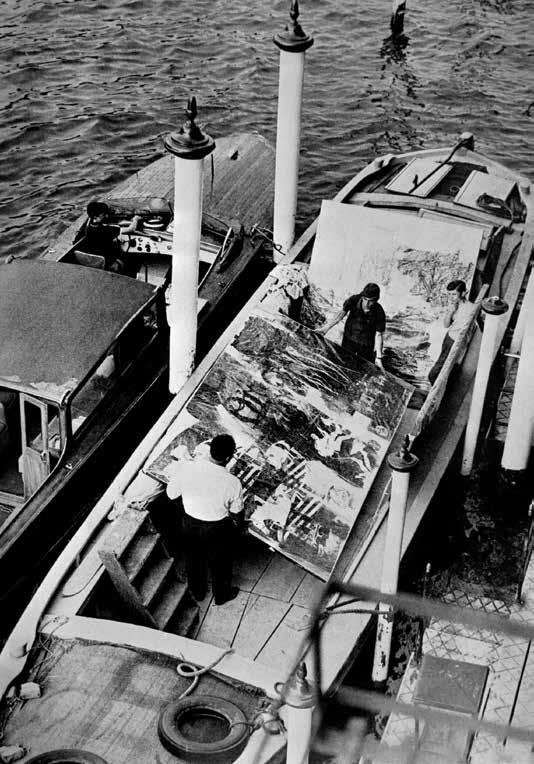
A WORLD RECONSIDERED
In the late 1980s, with the aim of locating artists of palpable authenticity, in terms of a fusion or contrast of modern forms and artists’ cultural roots, and while continuing to work with both European and American artists, Annina began to turn her attention to artists who engaged more fully with themes surrounding the cultural changes taking place.
Once again, her recruitment of Basquiat, accomplished years earlier with the stated intention of addressing the evolving New York scene, returns as a case in point. Basquiat, more than other artists, personifies a complexity that might be described as intersectional, to use a term that became widespread at the end of that decade and which has only more recently found a place in the vocabulary of art criticism, indicating the overlapping or intersection of different identities. Basquiat, born in New York and of Haitian descent, has often been reduced tout-court to that metropolitan landscape in which graffiti artists remain pigeonholed – this despite Annina’s frequent efforts to demonstrate his intimate acquaintance with modern art. As she has written: “The compositional strength, the structure, and the harmony found in his work [place] his visual language in the context of the classic art of Western Modernism. A painting such as his Untitled from 1981 with its basic architectural and multi-perspective organization of space is reminiscent of Matisse’s painting, The Moroccans (1915/16), at MoMA. A similar correspondence can be detected between Basquiat’s works and some of the paintings of the CoBrA movement. For example, Jean-Michel’s Dust Heads from 1982 could easily be compared to a painting by Asger Jorn.” 64
In light of these words, Basquiat might be said to constitute a bridge between “high” and “low” culture, and it is in this way that, up to a point, his work has been read. But Annina has also indicated another frame of reference in stating that “Jean-Michel’s visual language meanwhile – his magical and spiritual signs – produced a special aura of sacrality. [...] His visual emblems had a natural, logical association with Afro-Caribbean ritualistic traditions and syncretic folklore, such as Vodou and Santería or the islands’ artifacts such as pagan masks, all of which partly derived from Western Africa.” 65 If Paladino’s reference to Italic culture, as Annina has described it, can be understood as part of this search for such anthropological roots as might invoke individuals’ ostensible territorial identities, in Basquiat’s case the matter is decidedly more layered. There is no simple resolution in recalling his African-American origins – that is, by clinging to his immediate historical context. It is necessary to go back much further in time, furnished with perspectives introduced into artistic debate through the influence of Area Studies and postcolonial research. It was with the same awareness, even if it may not have been so structured at the time, that Annina felt the need to work with what she herself has called “a voice of the minorities.” 66
Without addressing too closely the interweaving of vernaculars attached to different cultures – in relation to which, again, a significant theoretical discussion was only later to evolve – it might be
said that Annina, at a certain point, intuited new directions for her exhibitions that would lead her to hold a solo show of Chéri Samba in 1990, succeeded by shows of Shirin Neshat and then Ghada Amer: figures who, in light of the non-Western modernist cultures to which they belong, address different social and identitarian issues, including, in the case of Shirin Neshat and Ghada Amer, questions related to the female experience. In this regard Annina states, “What I particularly liked was their way of expressing femininity as a public fact. It’s a dimension of their work that has always attracted me... Above all, though, the thing that most struck me was the authenticity and awareness with which they approached their concerns, not the concerns in and of themselves.” 67
It is widely recognized that other parameters have infiltrated the value-scale of art since 1989, sufficient to produce a different body of meanings. This was the year in which the Berlin Wall fell, an event symbolic of the moment that Western culture began to lean toward globalization. At the same time, there were many developments that signaled the same shift on an intimate scale. Reference cannot but be made to Magiciens de la Terre , the exhibition that heralded another way of understanding relations between the West and the rest of the world and in which many recognized the influence of Global Art History and World Art Studies as well as the premises for a new museology.68
Several years later, in 1998, Annina staged an exhibition of the same title, Magiciens de la Terre , exhibiting six artists who had also participated in the Paris event: Chéri Samba, Bowa Devi, R. B. Sharma, Singh Shyam, Vyakul, and Yang Jiechang. The fact that nine years had passed since the original exhibition should not imply a delay or a nostalgic retread. Rather, Annina expressed the need for a different relationship with time – different to the reigning customs of progress-oriented and modernist Western art – and reaffirmed her adherence to the defining spirit of the new situation.
More comprehensively, Annina broadened her purview by contemplating artists who emphasized their belonging to non-Western cultural environments, an objective that she had demonstrated in timely fashion in 1990 by mounting the first of three solo shows dedicated to Chéri Samba.
64. Nosei, “Common Ground,” 45, 203 in this volume.
65. Ibid.
66. Ibid., 44, 203 in this volume.
67. Roberto Lambarelli, “Il Faut que tu te transforme en argent,”, 128. On Nosei’s work with women artists, see Graziano Menolascina (ed.), Annina Nosei: The Difference Is Woman (Stamen Editore, 2021).
68. Magiciens de la Terre , curated by Jean-Hubert Martin, Centre Georges Pompidou / La Grande Halle – La Villette, Paris, 18 May – 14 August 1989.

THE DOOR
In 1985 Annina staged an exhibition at her gallery entitled The Door , exhibiting “doors” created by Karel Appel, Jean-Michel Basquiat, Mike Bidlo, Chuck Connelly, Vincent Gallo, Sol LeWitt, Mimmo Paladino, Pizzi Cannella, Robert Rauschenberg, Doug Sanderson, Julian Schnabel, and Antoni Tàpies. For the occasion she published a catalogue with some brief notes on the artists.
There can not be a better metaphor for art as the one of the door because the door is the ideal symbol for the function of art. What a metaphor does is invites the extension of meaning. The door, in its substitution of the painting or an object of art, illuminates the broader meaning of the fundamental of art. The work of art as door is a passage through which the artist travels to reach a position of ethical reality: it is a passage from reality to an inner life. But also the door is a symbol which opens the possibility for communication. In fact, doors are images of opening and enclosure.
The door has always assumed a symbolic function allusive to meanings other than that of immediate reality. This is also the function of art – to offer the extension of language. This way of thinking about art is the spiritual way of thinking about art.
In the door, 11 rue Larrey – opened and closed at the same time –Duchamp embodied the coincidence of opposites.
The domestic allusion, the quotidian aspect of the piece, is the transcendency that we have at home. It is a paradigm and has an alchemic symbology.
It defies time that this archetype can be presented again in an artistic forgery by MIKE BIDLO.
For CHUCK CONNELLY this door is the entrance to a strange obsessed room in which the artist is held prisoner like a tied up child.
JEAN-MICHEL BASQUIAT’s door is an old door from an apartment of a tenement building, smelling of a Latin kitchen, reminiscent of the immigrants and the villages from which they came and the saints to which they prayed.
Food and religion, which give shape to their day, remain a part of the family life of this group of people.
In the case of VINCENT GALLO, the door is an object of entrance and exit. His works on metal plates reveal nostalgic signs of past places and times evoking and erasing memories. They are layers of continuing processes which the artist fixes at once in a pure image. His door is a functional expression of his concept: in all the works of VINCENT GALLO there is this double current – the willful flux from the past to the present and back.
Sometimes there are trespassings of cultures. At times there are cultures of the past which can appear to be more advanced than those which are being replaced. Industrial detritus is transformed by VINCENT GALLO into still lifes which are perfect images, celebrations of purity.
UNTITLED
[TO JEAN-MICHEL BASQUIAT]
This text was published in the catalogue Jean-Michel Basquiat , Galerie Enrico Navarra, Paris, 1996.
Damn you Jean-Michel! Why did you die? Didn’t you know the hardest thing to shake is the banality of people. You can break their correctness, and mend their incorrectness, but no transgression or excessiveness will win against the paralytic commonplace.
Like Artaud or Manzoni, each drawing that you did, or each word you wrote has monumental solidity against which crash and break, instantly shattered the pretended good will of the insensitive. That your extreme courage was blindly vulnerable, I knew the first time I met you. And it intoxicated me, the enthusiasm of being a small part of your Public Address
That first show that you insisted on “fitting yourself into” certainly hit the public more than I would have liked. “The Philistines” were attracted to those same paintings that were “pointing the finger” at them. Did they find those paintings cathartic? Or are they using these paintings as trophies for those unconquered territories, truths, where you in fact kept your purity?...
(I think that necessity, that hunger to keep that purity, made him appear as eccentric, as selfish, or made him dissipated. Maybe sometimes he couldn’t hold it. Some paintings might be routine, or of repertory, but the whole extraordinary body of work is remaining as a “Eucaristic” witness of his great artistic sacrifice).

ANNINA NOSEI GALLERY EXHIBITION HISTORY
ANNINA NOSEI GALLERY
100 PRINCE STREET
1980 1981
SEPTEMBER 20 / OCTOBER 7
GROUP SHOW
Jim Casebere, Mike Glier, Mike Kelley, Kathryn Mish, Tom Sansone, and others
OCTOBER 11 / NOVEMBER 1
Mimmo Paladino
NOVEMBER 6 / 20
David Salle
NOVEMBER 22 / DECEMBER 31
Tom Wudl
Paolo Colombo

DECEMBER 20 / JANUARY 17
DRAWINGS AND PAINTINGS ON PAPER
Jack Barth, Troy Brauntuch, Francesco Clemente, Sandro Chia, Enzo Cucchi, David Deutsch, Mike Glier, Robert Longo, Mimmo Paladino, David Salle, Julian Schnabel, Ernesto Tatafiore, Tom Wudl
JANUARY 20 / FEBRUARY 8
Ernesto Tatafiore
FEBRUARY 10 / 28
Lynn Hershman
Michael Clegg and Martin Guttmann

MARCH 3 / 21
Loren Calaway
MARCH 25 / APRIL 18
Mike Glier

APRIL 21 / MAY 18
David Deutsch
MAY 19 / JUNE 4
Keith Milow, Salomé and Castelli
JUNE 5 / 30
Bill Beckley
1981 1982
SEPTEMBER 19 / OCTOBER 29
K. H. Hödicke

OCTOBER 31 / NOVEMBER 19
PUBLIC ADDRESS
Jean-Michel Basquiat, Bill Beckley, Mike Glier, Keith Haring, Jenny Holzer, Barbara Kruger, Peter Nadin

NOVEMBER 21 / DECEMBER 16
Salomé
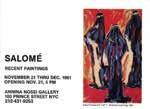
DECEMBER 19 / JANUARY 24
GROUP SHOW
Jack Barth, Loren Calaway, Paolo Colombo, David Deutsch, Carlo Maria Mariani, Ernesto Tatafiore, James Welling
JANUARY 30 / FEBRUARY 28
Donald Newman

MARCH 6 / APRIL 1
Jean-Michel Basquiat

APRIL 3 / MAY 6
Bernd Koberling
MAY 8 / JUNE 3
Luciano Castelli

1982 1983
JUNE 5 / 30
GROUP SHOW
Jean-Michel Basquiat, David Deutsch, Mike Glier, K. H. Hödicke, Bernd Koberling, Donald Newman, Mimmo Paladino, and others

SEPTEMBER 11 / 30
Keith Milow
OCTOBER 2 / 30
Stephen Mueller
NOVEMBER 3 / 30
David Deutsch

DECEMBER 18 / JANUARY 6
GROUP SHOW
John Ahearn, Jean-Michel Basquiat, Martin Disler, Mike Glier, Keith Haring, Roberto Juarez, Anselm Kiefer, Mimmo Paladino, Salomé & Castelli
JANUARY 8 / FEBRUARY 1
Mario Schifano
FEBRUARY 12 / MARCH 3
Jean-Michel Basquiat
FEBRUARY 12 / MARCH 3
Rammellzee

MARCH 5 / 24
Barbara Kruger
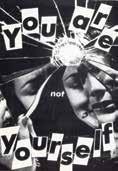
MARCH 25 / APRIL 9
François Boisrond
1983 1984
APRIL 19 / MAY 7
Athos Ongaro
MAY 10 / JUNE 10
K. H. Hödicke
JUNE 11 / JULY 29
GROUP SHOW
Jack Barth, Jean-Michel Basquiat, François Boisrond, David Bowes, David Deutsch, Jan Hashey, Angela Ho, K. H. Hödicke, Barbara Kruger, Keith Milow, Sabina Mirri, Stephen Mueller, Athos Ongaro, Mimmo Paladino, Ira Richer, Mario Schifano
OCTOBER 1 / NOVEMBER 2
Ira Richer
NOVEMBER 5 / DECEMBER 3
GROUP SHOW
David Deutsch, Neil Jenney, Robert Mangold Back Room: Keith Sonnier
DECEMBER 13 / JANUARY 11
EUROPEAN EXPRESSIONS
Jean-Michel Alberola, Miquel Barceló, François Boisrond, Bruno Ceccobelli, Peter Chevalier, Giuseppe Gallo, K. H. Hödicke, Helmut Middendorf, Sabina Mirri, Luigi Ontani, Mimmo Paladino
JANUARY 14 / FEBRUARY 8
Sabina Mirri
FEBRUARY 11 / MARCH 8
David Bowes
MARCH 10 / APRIL 14
Barbara Kruger

APRIL 14 / MAY4
GROUP SHOW
David Shapiro (Poetry Reading) José María Bermejo, David Bowes, George Condo, Sabina Mirri, Stephen Mueller
MAY 5 / JUNE 2
Helmut Middendorf
1984
1985
JUNE 5 / JULY 29
GROUP SHOW
Jean-Michel Alberola, David Bowes, K. H. Hödicke, Helmut Middendorf, Keith Milow, Sabina Mirri, Ira Richer, Marco Tirelli
SEPTEMBER 11 / OCTOBER 4
Georges Rousse Back Room: K. H. Hödicke
OCTOBER 6 / 31
Chuck Connelly
NOVEMBER 3 / 30
Karel Appel
DECEMBER 1 / 31
Stephen Mueller
JANUARY 5 / 31
Marco Tirelli
FEBRUARY 2 / 28
Pizzi Cannella

MARCH 2 / 28
Nunzio
MARCH 30 / APRIL 18
Ira Richer
APRIL 20 / MAY 9
François Boisrond
MAY 11 / JUNE 6
Sabina Mirri
JUNE 7 / JULY 7
THE DOOR
Karel Appel, Jean-Michel Basquiat, Mike Bidlo, Chuck
Connelly, Vincent Gallo, Sol LeWitt, Mimmo Paladino, Pizzi Cannella, Robert Rauschenberg, Doug Sanderson, Julian Schnabel, Antoni Tàpies
1985
SEPTEMBER 21 / OCTOBER 17
DRAWING THE LINE / PAINTING
Jean-Michel Basquiat, Mike Bidlo, Chuck Connelly, Pizzi Cannella, David Salle, Mario Schifano, Cy Twombly
OCTOBER 19 / NOVEMBER 14
Vincent Gallo
NOVEMBER 16 / DECEMBER 12
Chuck Connelly
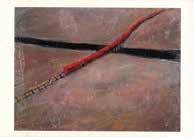
DECEMBER 14 / JANUARY 8
Jean-Michel Basquiat
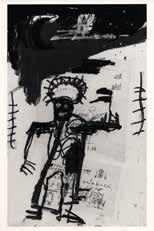
1986
JANUARY 11 / FEBRUARY 6
Helmut Middendorf
FEBRUARY 8 / MARCH 2
Barbara Kruger
MARCH 4 / APRIL 3
Claudio Palmieri
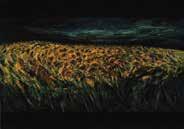
APRIL 5 / MAY 1
Pizzi Cannella
MAY 3 / 30
Pietro Fortuna
MAY 31 / JUNE 28
GROUP SHOW
Chuck Connelly, Vincent Gallo, Rayberry ©, Brigitta Rohrbach, Sy Ross, Tod Wizon

1986
OCTOBER 4 / 31
Vincent Gallo
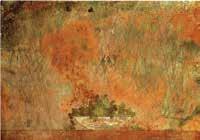
NOVEMBER 1 / 27
Stephen Mueller
NOVEMBER 1 / DECEMBER 31
GROUP SHOW
Bruno Ceccobelli, Pietro Fortuna, Nunzio, Claudio
Palmieri, Pizzi Cannella, Marco Tirelli, Alfredo Zelli
1987
JANUARY 10 / 30
Group Show
Front Room: Barbara Kruger, Annette Lemieux, Peter Nagy, James Welling Back Room: Ira Richer
FEBRUARY 7 / MARCH 4
Nunzio
MARCH 7 / 31
Tod Wizon
MARCH 7 / APRIL 2
Andy Moses
APRIL 4 / APRIL 30
Chuck Connelly

MAY 2 / 28
SPATIAL / FX
Vikky Alexander, Jack Barth, Beth Brenner, Tim Ebner, Steven Harvey, Andy Moses
1988
MAY 30 / SEPTEMBER 25
ROTATING PHOTOGRAPHY
Jennifer Bolande, Ellen Brooks, Victor Burgin, Vincent Gallo, Pierre et Gilles, Scott Gordon, Clegg & Guttmann, Steven Harvey, Larry Johnson, Karen Knorr, Richard Morrison, Richard Prince, Georges Rousse, Suzanne Santoro, Starn Twins, Lewis Stein, Sokhi Wagner, James Welling
JANUARY 12 / FEBRUARY 3
Vincent Gallo
FEBRUARY 6 / MARCH 3
Allan McCollum
OCTOBER 3 / 30
Beth Brenner
NOVEMBER 7 / DECEMBER 2
Ellen Brooks
DECEMBER 5 / JANUARY 6
FRAGMENTS
Nancy Bowen, Günther Förg, Jannis Kounellis, Nunzio
MARCH 5 / 30
GROUP SHOW
Tamas Banovich, Beth Brenner, Jan Commandeur, Michael Corris, Marilyn Minter, Mary Obering, John Obuck
APRIL 9 / 30
Mary Obering
MAY 14 / SEPTEMBER 10
MUTATIONS
Vikky Alexander, Beth Brenner, Michael Byron, Steve DiBenedetto, Scott Gordon, Betsy Kaufman, Gary Lang, Marilyn Lerner, Steven Parrino, Alexis Rockman, Mark Stahl, Li Trincere, and others
Back Room: Michelangelo Tomarchio Levi
MAY 28
Massimo Kaufmann
1988
SEPTEMBER 17 / OCTOBER 1
Vincent Gallo
OCTOBER 8 / 31
Kristin Jones and Andrew Ginzel

NOVEMBER 5 / 30
Stephen Mueller
DECEMBER 3 / JANUARY 15
MEMORIAL EXHIBITION
Jean-Michel Basquiat

1989
JANUARY 21 / FEBRUARY 15
Helmut Middendorf
FEBRUARY 18 / MARCH 11
Ellen Brooks
MARCH 18 / APRIL 9
Julio Galán
APRIL 15 / MAY 2
Gary Lang
MAY 9 / 30
Beth Brenner
JUNE 6 / 30
Christiane Richter
Back Room: Ronald Gault Jirado, Nunzio, Maurizio
Pellegrin, Rini Tandon
JULY 6 / 28
GROUP EXHIBITION TO BENEFIT THE AIDS CRISIS
José María Bermejo, Beth Brenner, Stefano Castronovo, Mark DeMuro, Félix González-Torres, Willy Heeks, Gary Lang, Matthew McCaslin, Sabina Mirri, Olivier Mosset, Chuck Nanney, Rayberry ©, Sy Ross, Michael Zwack, and others
1989
SEPTEMBER 9 / 30
GROUP SHOW
Jean-Michel Basquiat, Beth Brenner, Ellen Brooks, Julio Galán, Bernd Koberling, Gary Lang, Helmut Middendorf, Stephen Mueller, Nunzio
OCTOBER 5 / 30
Ronald Gault Jirado
NOVEMBER 4 / 25
WORKS ON PAPER
Alice Aycock, Jack Barth, Jean-Michel Basquiat, Alighiero Boetti, Beth Brenner, Daniel Buren, Sandro Chia, George Condo, Vincent Desiderio, Eric Fischl, Lucio Fontana, Günther Förg, Julio Galán, Giuseppe Gallo, Ginzel and Jones, Jannis Kounellis, Julian Lethbridge, Sol LeWitt, Malcolm Morley, S. Mueller, Nunzio, R. Opałka, Pizzi Cannella, Lucas Samaras, Robert Smithson, M. Tirelli, L. Vinciarelli, F. E. Walther, Tom Wudl

DECEMBER 2 / 30
Mary Obering
1990
JANUARY 3 / 24
GROUP SHOW
Jean-Michel Basquiat, Chuck Connelly, Julio Galán, Guillermo Kuitca, Gary Lang, Helmut Middendorf, Stephen Mueller, Marco Tirelli
JANUARY 27 / FEBRUARY 21
Guillermo Kuitca

FEBRUARY 24 / MARCH 21
Gary Lang
MARCH 24 / APRIL 17
Nancy Bowen
APRIL 19 / MAY 15
Chéri Samba
MAY 17 / JUNE 30
Julio Galán

1991
OCTOBER 6 / 27
Tsibi Geva
NOVEMBER 6 / 28
Stephen Mueller
DECEMBER 1 / JANUARY 12
Helmut Middendorf
JANUARY 15 / FEBRUARY 16
PERSONAL PORTRAITS
Donald Baechler, Sandro Chia, Chuck Connelly, Anh Duong, Julio Galán, David Humphrey, Guillermo Kuitca, Keith Milow, Gian Marco Montesano, Ray Smith, Jenny Watson
FEBRUARY 16 / MARCH 9
Nancy Bowen
Gary Lang
MARCH 13 / 30
LANDSCAPE PAINTINGS
David Bowes, Katherine Bowling, Ellen Brooks, Michael Byron, Corrine Colarusso, Brad Davis, Howard Finster, Steve Gianakos, April Gornik, Neil Jenney, Guillermo Kuitca, EllenPhelan, William Wegman
APRIL 3 / MAY 10
Guillermo Kuitca
APRIL 3 / MAY 10
Nancy Bowen
MAY 17 / JULY 30
Gian Marco Montesano
1991
SEPTEMBER 28 / NOVEMBER 6
Jenny Watson
NOVEMBER 9 / DECEMBER 7
Chéri Samba
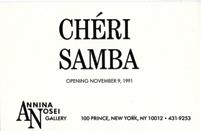
DECEMBER 10 / JANUARY 7
WORKS ON PAPER
Jean-Michel Basquiat, Nancy Bowen, Beth Brenner, Bruno Ceccobelli, Julio Galán, Tony Fitzpatrick, Anton Henning, Jacqueline Humphries, Guillermo Kuitca, Helmut Middendorf, Gian Marco Montesano, Stephen Mueller, Dennis Oppenheim, Nicolas Rule, Peter Schuyff, Ray Smith, Luiz Zerbini
1992
FEBRUARY 7 / MARCH 7
Sal Scarpitta
New Works 1990-1992 Curated by Collins & Milazzo in cooperation with Leo Castelli Gallery
MARCH 28 / APRIL 25
Julio Galán
MAY 2 / 30
Stephen Mueller
JUNE 5 / JULY 11
SPECS: PHOTOGRAPHY GROUP SHOW
Ellen Brooks, Carl Goldhagen, Elaine Reichek, Christiane Richter, Gary Schneider, Todd Watts, Roger Welch, James Welling
OCTOBER 3 / 31
WHO’S AFRAID OF DUCHAMP, MINIMALISM AND PASSPORT PHOTOGRAPHY?
Curated by Collins & Milazzo Ford Beckman, Lawrence Carroll, Stephen Ellis, Suzan Etkin, Peter Halley, Nicholas Howey, James Hyde, Jonathan Lasker, Annette Lemieux, Fabian Marcaccio, Donna Moylan, Philip Taaffe
NOVEMBER 4 / 30
Gian Marco Montesano
DECEMBER 4 / 31
Jenny Watson
1993 1993
JANUARY 6 / 30
GROUP EXHIBITION
Curated by Valerie Del-Sol John M. Armleder, Taro Chiezo, Mark Dion, Sylvie Fleury, Allan McCollum, Haim Steinbach
FEBRUARY 19 / MARCH 20
Pizzi Cannella
MARCH 27 / APRIL 22
Arturo Duclos
APRIL 23 / MAY 15
Tsibi Geva
MAY 21 / JULY 30
7 LATIN AMERICAN ARTISTS
Arturo Duclos, Julio Galán, Guillermo Kuitca, Miguel Ríos, Teresa Serrano, Jorge Tacla, Meyer Vaisman
SEPTEMBER 11 / OCTOBER 2
CONTINUING GENERATIONS
Curated by Paolina Weber René Pierre Allain, Carl Andre, Lawrence Carroll, Günther Förg, Donald Judd, Byron Kim, Paul Mittleman, Olivier Mosset, Daniel Terdoslavich, Bettina Werner
OCTOBER 9 / NOVEMBER 6
Nancy Bowen
NOVEMBER 12 / DECEMBER 11
Kocheisen + Hullmann
DECEMBER 16 / JANUARY 29
GROUP EXHIBITION
Arturo Duclos, Flechemuller, Daniele Robbiani, Sara Sosnowy, Jenny Watson
1994
1995
FEBRUARY 5 / MARCH 3
Stephen Mueller
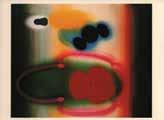
MARCH 5 / 31
Flechemuller
APRIL 6 / 30
Manuel Ocampo
MAY 7 / JUNE 4
Arturo Duclos
JUNE 7 / JULY 7
GROUP EXHIBITION
Flechemuller, Athos Ongaro, Teresa Serrano, Jenny Watson
SEPTEMBER 20 / OCTOBER 11
Jenny Watson
OCTOBER 12 / NOVEMBER 12
Teresa Serrano
NOVEMBER 16 / DECEMBER 15
Chéri Samba
DECEMBER 17 / FEBRUARY 8
Anna Paparatti
FEBRUARY 10 / MARCH 2
Tsibi Geva
MARCH 4 / APRIL 5
Kocheisen + Hullmann
APRIL 7 / MAY 3
Flechemuller
MAY 5 / JUNE 1
Arturo Duclos
JUNE 3 / AUGUST 30
SUMMER INVITATIONAL
Ghada Amer, Arturo Elizondo, Gert Rappenecker, Amy Sillman
SEPTEMBER 30 / OCTOBER 28
Shirin Neshat
ANNINA NOSEI GALLERY
530 WEST 22ND STREET
1995 / 1996 1996
NOVEMBER 18 / DECEMBER 12
INAUGURAL EXHIBITION OF NEW ADDRESS
Ghada Amer, Veronique Bellavista, Fernando Canovas, Arturo Duclos, Arturo Elizondo, Flechemuller, Julio Galán, Kocheisen + Hullmann, Gian Marco Montesano, Stephen Mueller, Shirin Neshat, Manuel Ocampo, Teresa Serrano
SEPTEMBER 14 / OCTOBER 9
DEATH IN LIGHT OF THE PHONOGRAPH: EXCURSIONS INTO THE PRE-LINGUISTIC
Paul D. Miller
DECEMBER 16 / FEBRUARY 7
Athos Ongaro
FEBRUARY 10 / MARCH 14
Daniele Galliano
MARCH 16 / APRIL 10
Ghada Amer
APRIL 13 / MAY 12
Arturo Elizondo
MAY 18 / JUNE 30
Julio Galán
JUNE 3 / AUGUST 30
SUMMER GROUP EXHIBITION
Ghada Amer, Fernando Canovas, Arturo Duclos, Arturo
Elizondo, Julio Galán, Daniele Galliano, Stephen Mueller, Shirin Neshat, Jenny Watson
OCTOBER 12 / NOVEMBER 7
Manuel Ocampo
NOVEMBER 9 / DECEMBER 9
Stephen Mueller
DECEMBER 14 / JANUARY 10
Helmut Middendorf
1997 1997
JANUARY 11 / FEBRUARY 5
GROUP DRAWING EXHIBITION
Ghada Amer, Veronique Bellavista, William Cotton, Arturo Duclos, Daniele Galliano, Manuel Ocampo, Joana Rosa
FEBRUARY 8 / MARCH 5
Teresa Serrano
MARCH 8 / APRIL 2
Fernando Canovas
APRIL 5 / MAY 1
Arturo Duclos
MAY 3 / JUNE 1
Shirin Neshat

JUNE 3 / 13
Fabian Burgos
JULY 15 / AUGUST 18
GROUP DRAWING EXHIBITION
Ghada Amer, Veronique Bellavista, Fabian Burgos, Arturo Duclos, Arturo Elizondo, Daniele Galliano, Manuel Ocampo, Pablo Siquier
SEPTEMBER 20 / OCTOBER 16
Daniele Galliano
OCTOBER 18 / NOVEMBER 18
Pablo Siquier
NOVEMBER 20 / DECEMBER 18
WINTER GROUP EXHIBITION
Fabian Burgos, Alan Cheung, Arturo Elizondo, Daniele Galliano, Graciela Hasper, Martin Larralde, Stephen Mueller, Chéri Samba, Pablo Siquier
DECEMBER 20 / JANUARY 29
Graciela Hasper
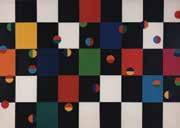
1998 1998
JANUARY 31 / MARCH 14
Martin G. Larralde
MARCH 16 / APRIL 16
MAGICIENS DE LA TERRE WORKS FROM 1985
Bowa Devi, Yang Jiechang, Chéri Samba, R. B. Sharma, Singh Shyam, Vyakul
APRIL 18 / MAY 20
GhadaAmer
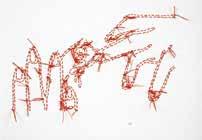
MAY 22 / JUNE 24
Fernando Canovas
SEPTEMBER 3 / OCTOBER 25
GALLERY ARTISTS
Ghada Amer, Veronique Bellavista, Fabian Burgos, Arturo Elizondo, Graciela Hasper, Pablo Siquier, Jenny Watson
OCTOBER 1 / 28
Deborah Turbeville
OCTOBER 29 / NOVEMBER 13
Santolo De Luca
NOVEMBER 14 / DECEMBER 10
Arturo Elizondo
DECEMBER 12 / JANUARY 14
Vincent Gallo
JULY 10 / AUGUST 30
Jenny Watson
1999 1999
JANUARY 16 / FEBRUARY 14
FILTERED COMPONENTS
Curated by Paolina Weber
Chris Cunningham, Lucia Pearcey, David Perry
FEBRUARY 20 / MARCH 19
Liliana Porter
MARCH 20 / APRIL 22
Myriam Laplante
APRIL 23 / MAY 26
Abraham David Christian
Curated by Richard Milazzo
MAY 28 / JULY 17
José Bedia
JULY 19 / SEPTEMBER 28
GROUP EXHIBITION
Arturo Duclos, Arturo Elizondo, Gian Marco Montesano, Cristiano Pintaldi, Andrea Salvino
SEPTEMBER 30 / NOVEMBER 9
Fernando Canovas
NOVEMBER 11 / DECEMBER 17
James Aldridge
DECEMBER 10 / FEBRUARY 4
GROUP PHOTOGRAPHY EXHIBITION
Janieta Eyre, Myriam Laplante, Martin Larralde, Shirin Neshat, Luigi Ontani, Marta Maria Pérez Bravo, Liliana Porter, Inez Van Lamsweerde
2000 2000
FEBRUARY 5 / MARCH 8
Fabian Burgos
MARCH 11 / APRIL 6
Kocheisen + Hullmann
APRIL 8 / MAY 17
Marta Maria Pérez Bravo
MAY 19 / JUNE 30
Liliana Porter
JULY 5 / SEPTEMBER
SUMMER INVITATIONAL
Carole Benzaken, Fernando Canovas, Carlos Capelan, Maki Na Kamura, Myriam Laplante, Gernot Lindner, Federico Uribe, Jenny Watson
SEPTEMBER 30 / NOVEMBER 1
Graciela Hasper
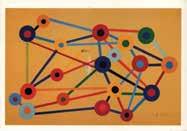
NOVEMBER 4 / DECEMBER 14
Federico Uribe
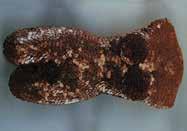
DECEMBER 16 / JANUARY 17
G. Lindner / C. Benzaken 22, rue Cauchy: Saint Clair Cemin, A. D. Christian, Elliot Schwartz
Curated by Richard Milazzo
2001 2002
JANUARY 19 / MARCH 3
Jenny Watson
MARCH 9 / APRIL 17
Tristano Di Robilant
APRIL 19 / MAY
Paolo W. Tamburella
JUNE / JULY
SUMMER GROUP SHOW
J. Bedia, H. McFall, S. Plumb, L. Porter, P. W. Tamburella, F. Uribe
SEPTEMBER 21 / OCTOBER 13
Tsibi Geva
OCTOBER 20 / NOVEMBER 25
José Bedia
JANUARY 12 / FEBRUARY 16
Liliana Porter
FEBRUARY 22 / APRIL 3
David Bowes

APRIL 5 / MAY 15
Heidi McFall
MAY 17 / JULY 6
Myriam Laplante

NOVEMBER 30 / JANUARY 10
Arturo Elizondo
2002
2003
JULY 9 / OCTOBER 15
SUMMER GROUP EXHIBITION
J.Bedia,I.Chiaraluce,M.Laplante, H. McFall, L. Porter, F. Uribe, L. Warck-Meister
OCTOBER 18 / NOVEMBER
Federico Uribe
DECEMBER 10 / JANUARY 31
Paolo W. Tamburella

FEBRUARY 26 / MARCH 31
GROUP EXHIBITION
José Bedia, Myriam Laplante, Ieva Mediodia, Liliana Porter, Paolo W. Tamburella, Lucia Warck-Meister, Jenny Watson

MAY 9 / JUNE 30
Heidi McFall

SEPTEMBER 10 / OCTOBER 15
GROUP EXHIBITION
Graciela Hasper, Heidi McFall, Ieva Mediodia, Liliana Porter, Pablo Siquier, Paolo W. Tamburella, Federico
Uribe Second Room: Boaz Arad, Tsibi Geva, Miki Kratsman
OCTOBER 14 / NOVEMBER 21
James Rosenquist
Curated by Robert Miller Gallery
NOVEMBER 28 / JANUARY 7
Federico Uribe
2004 2004
JANUARY 9 / FEBRUARY 11
Michelle Mercurio
FEBRUARY 13 / APRIL 10
Ieva Mediodia
APRIL 16 / MAY 22
Jenny Watson

MAY 26 / JULY 14
Marta Maria Pérez Bravo
Second Room: Leemour Pelli
JULY 16 / SEPTEMBER 6
GROUP SHOW
MyriamLaplante,Michelle Mercurio, Marta Maria Pérez
Bravo, Liliana Porter
SEPTEMBER 9 / OCTOBER 5
YOUNG MIAMI
Natalia Benedetti, Pepe Mar, Beatriz Monteavaro, Cristina Lei Rodriguez, Leyden Rodriguez Casanova, Wendy Wischer, Brian Reedy. Curated by Dorit Arad
OCTOBER 9 / NOVEMBER 6
Liliana Porter
NOVEMBER 9 / DECEMBER 8
Arturo Elizondo
DECEMBER 10 / JANUARY 16
Lucia Warck-Meister
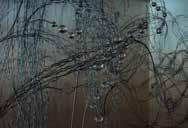
2005 2005
JANUARY 18 / FEBRUARY 17
Tsibi Geva
FEBRUARY 18 / MARCH 30
Michelle Mercurio
APRIL 1 / MAY 5
Kocheisen + Hullmann

APRIL 11 / MAY 31
Leemour Pelli
MAY 6 / JUNE 6
Heidi McFall

JUNE 10 / JULY 23
EVERLAND
Curated by David Gibson Peggy Bates, Erik Benson, Sandra Bermudez, Nancy Friedemann, Linda Ganjian, Kim Keever, Dean Monogenis, Russell Nachman, Mark Power, Raven Schlossberg, Ruth Waldman
JULY 24 / SEPTEMBER 27
SUMMER GROUP SHOW
Arturo Duclos, Heidi McFall, Ieva Mediodia
SEPTEMBER 28 / NOVEMBER 1
Myriam Laplante

NOVEMBER 4 / 30
Gian Marco Montesano
